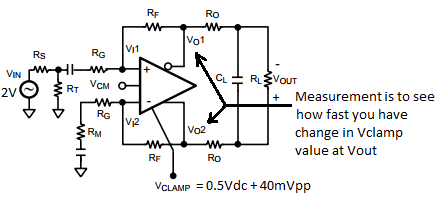Hi
LMH6553 offers clamp bandwidth and clamp slew rate as clamp performance parameters.
I could not get the meaning of these parameters.
Do you have any material that is explaining about these parameters?
Could you please tell me what these parameters and conditions are?
BestRegards



